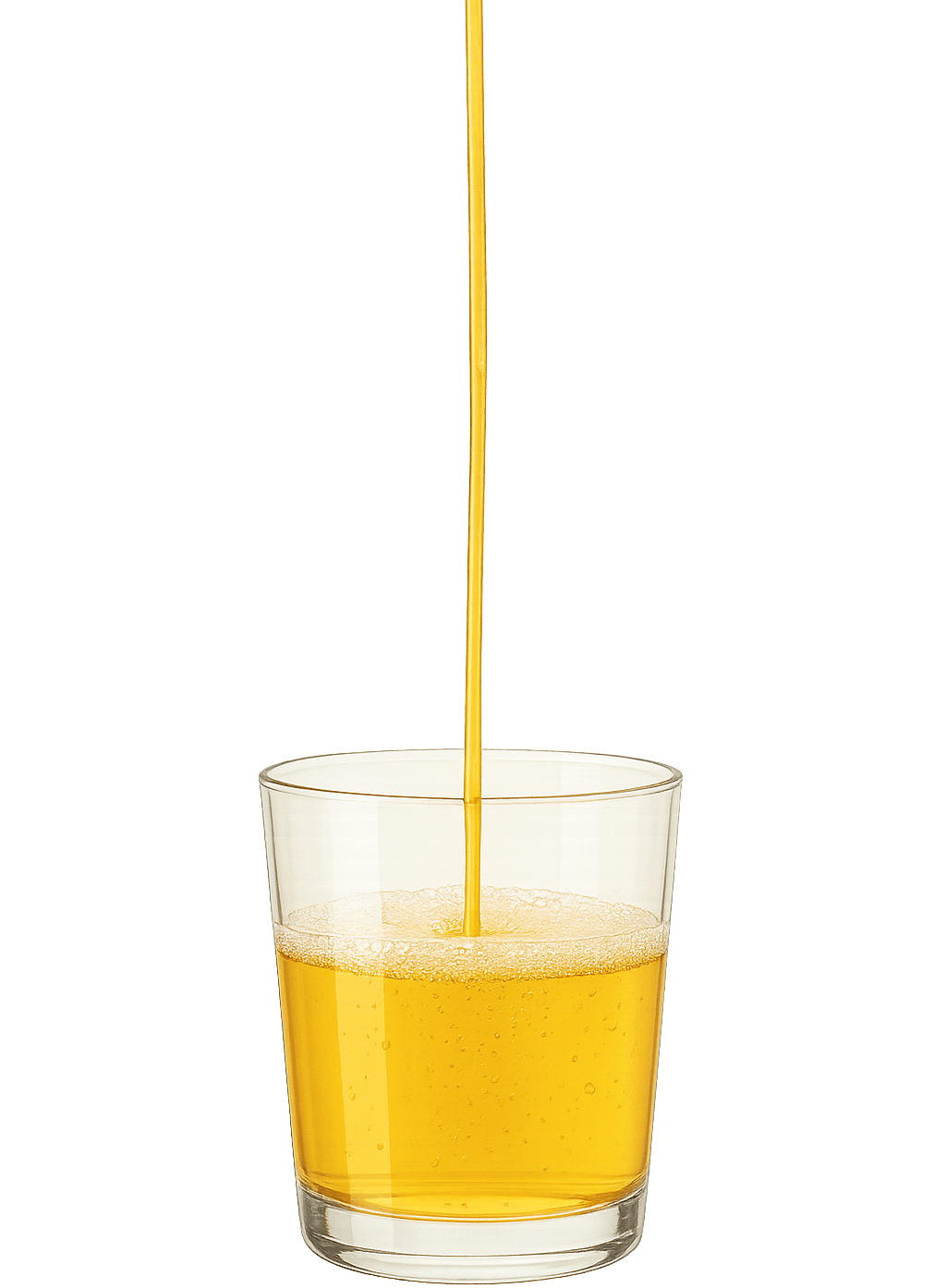Shrewsbury Sagardoa 2025
A Basque‑inspired, bottle‑conditioned cider made from apples picked in Mum’s garden in Shrewsbury. It’s lively, lightly hazy, and proudly rustic — an English harvest with a sagardoa heart.
- ABV
- ~9.5%
- Style
- Basque‑inspired farmhouse cider
- Batch size (pressed)
- ~18.25 L juice
- Bottled as cider
- 26 × 330 ml (≈ 8.6 L)
- Yeast
- Lalvin 71B‑1122
- Start date
- Tue 7 Oct 2025
- Bottled
- Tue 21 Oct 2025

Details
What is “Sagardoa”?
Sagardoa is the Basque word for cider — literally “apple wine.” Traditional Basque sidra natural is fermented with minimal intervention, bottled with a live yeast character, and served with a brief, theatrical pour from height to aerate and wake up the aroma. The result is brisk, tart, and quietly sparkling rather than fizzy. It’s all about freshness and energy rather than polish.
What we made
This is our Shrewsbury take on Basque‑style cider: garden apples pressed and blended, fermented clean but left a little wild around the edges. Golden Delicious brings soft fruit, Lord Lambourne adds aroma and tang, and John Downie (crab) tightens everything with acidity and a touch of grip. We bottled straight from primary and conditioned naturally in the bottle for a lively, farmhouse feel.
Production
Ingredients
- 10 L juice — Golden Delicious
- 5 L juice — John Downie (crab apple)
- 3.25 L juice — Lord Lambourne
- Yeast: Lalvin 71B‑1122
- Nutrient: Fermaid O — total 7 g (3.5 g at pitch, 3.5 g at ~1.030)
- Priming: Two carbonation drops (dextrose) per 330 ml bottle
Fermentation process
- Tue 7 Oct 2025 — Press & pitch: OG 1.062. Added 3.5 g Fermaid O, pitched 71B. ~18 °C.
- Fri 10 Oct — Early sulphur noted: Very active ferment; brief but strong sulphur aroma from gas release. Added second 3.5 g Fermaid O; daily degas/swirl. Smell reduced over next days.
- Tue 21 Oct — Dry: FG 0.990. Fermentation complete.
- Tue 21 Oct — Bottled (no secondary): Direct from primary as an experiment; two dextrose drops per 330 ml. Filled 26 × 330 ml as cider; remaining cider went to vinegar vessels with last year’s mother.
Conditioning
- Carbonation phase: 2–3 weeks at 18–20 °C (check a PET tester for firmness if used).
- Conditioning phase: Move cool (10–14 °C) for 4–6 weeks.
- First tasting window: Early December 2025; improves into spring 2026.
Aging potential
- Drinks well young (3 months) with bright acidity and a little yeast roundness.
- Smooths noticeably by 6–9 months; holds structure beyond a year thanks to ABV and acidity.
Where this diverges from traditional sagardoa
We’re home makers, not a sagardotegi. The choices below reflect our skills and the gear we actually have — a hand press, buckets and demijohns, no wooden kupelas, a simple bottling wand. We leaned on a dependable wine yeast, a small nutrient schedule, and easy priming drops for repeatable results without specialist equipment.
- Yeast: We used a cultured wine yeast (Lalvin 71B‑1122) rather than a wild/native ferment. Many Basque ciders are spontaneous or use house cultures.
- Nutrients: We fed the ferment with Fermaid O. Classic sagardoa is more hands‑off with no added nutrients.
- Carbonation method: We primed with dextrose drops at bottling instead of trapping residual sugar by bottling mid‑ferment (pet‑nat) or through keeving.
- Strength: Our cider finished around 9.5% ABV, whereas Basque sidra is typically ~5–6%. Expect a firmer palate and longer aging curve.
- Apples: An English garden blend (Golden Delicious, Lord Lambourne, John Downie crab) rather than traditional Basque bittersweet/bittersharp cultivars.
- Aging vessel: We skipped long bulk aging in large wooden kupelas (chestnut/oak). We bottled young from primary for freshness.
- Format: 330 ml crown‑capped bottles rather than the classic 700–750 ml green Basque bottles that are corked or crown‑capped.
- Bottling straight from primary keeps a touch of lees character — more texture, natural sparkle, and that "alive" sidra feel.
- Expect a compact sediment layer in each bottle; pour gently if you want it clearer or swirl the last splash for fullness. A short Basque‑style pour helps blow off any lingering sulphur.
These choices keep the spirit — lively, tart, and served with a short aerating pour — while making a Shrewsbury‑grown, home‑scale version that suits our apples and kit.